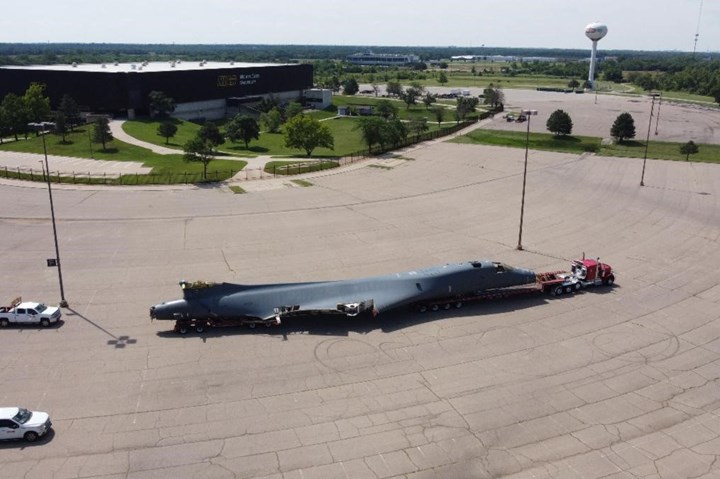Air Force, WSU-NIAR to study operational impacts on legacy B-1B bomber fuselage
NIAR team will perform a complete teardown and comprehensive inspection program of the B-1B 86-0101 structure to enable the B-1 Division to more comprehensively manage the fleet of aging bombers.

Photo Credit: Justin Salter, Berard
The Air Force Life Cycle Management Center B-1 Division is sponsoring a research project with Wichita State University’s National Institute for Aviation Research (NIAR, Wichita, Kan., U.S.) to study the effects of flight operations on aircraft structures.
The NIAR team will dismantle a B-1B 86-0101 fuselage, remove all the paint and primer and perform high-fidelity inspections looking for cracks and corrosion on the entire fuselage, including areas that have been inaccessible since manufacturing in the mid 1980s. To augment the ongoing NIAR B-1 Digital Twin Program — which brings legacy airplanes into the digital age, while simultaneously keeping the aircraft operating in peak condition until it retires — components that were not delivered with the Digital Twin fuselage will be scanned and digitized to complete the virtual fuselage model. To meet these objectives, NIAR will transport the 86-0101 fuselage from Tinker Air Force Base in Oklahoma City, Okla., to their facility north of Wichita, Kan.
Manufactured in 1986, tail #86-0101 was divested from service on April 19, 2021, landing for the final time at Tinker Air Force Base. Now, after a six-week process to remove wings, horizontal and vertical stabilizers and landing gear, the 130-foot long, 29-foot wide and 16-foot tall fuselage traveled the 165 miles on a truck designed specifically for this large transport. In addition, NIAR will transport a wing, nacelle, flaps, slats, spoilers, radomes and other components of interest to the B-1 Division.
86-0101 was specifically selected for this research program as it is one of the highest time airframes recently divested from the fleet. A complete teardown and comprehensive inspection program will provide the B-1 Division a unique understanding of the current condition of the aging fleet. The inspection results will allow the B-1 Division to proactively inspect the fleet, design repairs in advance of the fleet need and more comprehensively manage the fleet of aging bombers.
“NIAR is excited to continue to support the B-1 Division’s mission of keeping the aging bombers operating safely through 2040,” says Melinda Laubach-Hock, NIAR B-1 program manager and director of sustainment. “Advancements towards proactively managing the fleet with inspections, repairs and maintenance will directly improve mission readiness on this key military asset.”
“Wichita State’s partnership with the B-1 Division supports sustainment efforts for legacy weapon systems, like the B-1, that will immediately impact the preparedness of the warfighter,” says John Tomblin, WSU senior vice president for Industry and Defense and NIAR executive director. “In addition, these programs provide applied learning opportunities for Wichita State graduate and undergraduate students, which, in turn, allows the military to grow its future workforce.”
Related Content
-
Orbital Composites wins AFWERX award for Starfighter drone fleet
Under the TACFI contract, Orbital is implementing the AMCM process to build 3D printed composite multi-mission UAS aircraft, surpassing $10 million in government awards.
-
Large-format 3D printing enables toolless, rapid production for AUVs
Dive Technologies started by 3D printing prototypes of its composite autonomous underwater vehicles, but AM became the solution for customizable, toolless production.
-
US Air Force selects Integris Composites ballistic body armor
Cratus Wave armor is thin, lightweight and reduces heat stress, providing buoyant personal protection for the 582nd Helicopter Group.
















